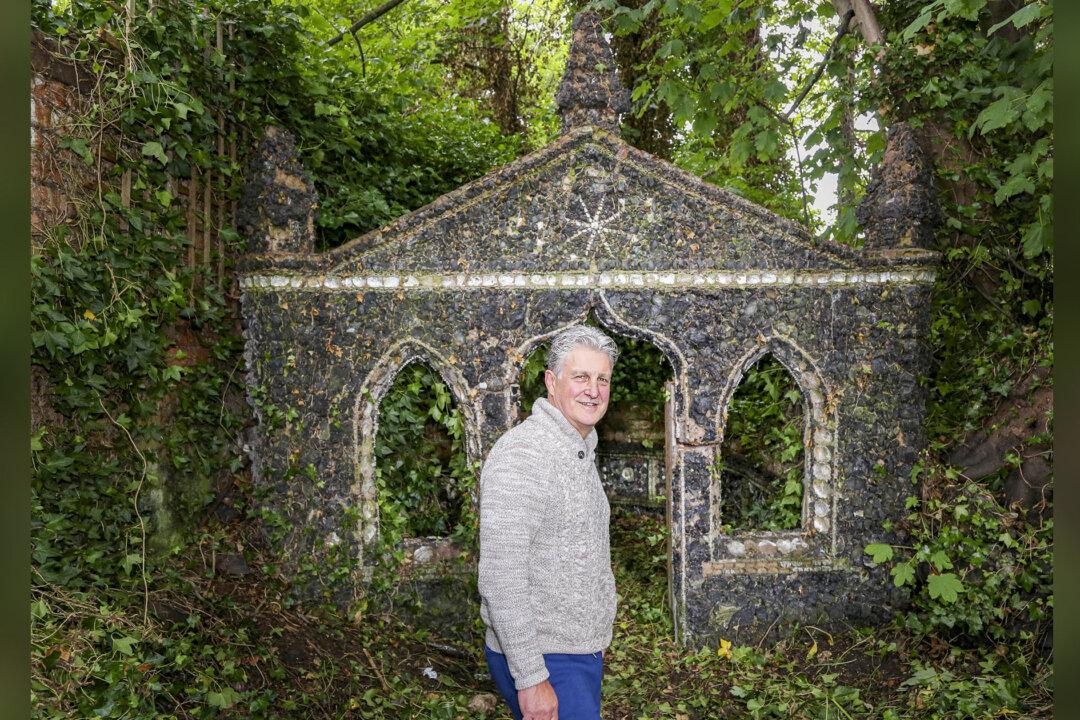A UK homeowner was stunned to uncover a beautiful 18th-century Gothic folly hidden at the end of his suburban back garden at the house where he has lived for 25 years.
John Bostock, 62, had been pruning ivy and tidying up his garden ahead of moving house when he made the incredible discovery on July 3.





